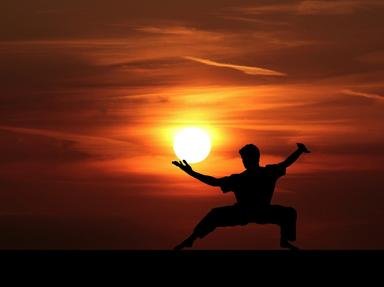Quiz Answer Key and Fun Facts
1. A Japanese martial art that emphasizes striking techniques, such as punches, kicks, and knee strikes.
2. A Japanese martial art that focuses on ground fighting and grappling techniques; further developed later in Brazil.
3. A Vietnamese martial art that includes strikes, kicks, throws, grappling, and weapon techniques.
4. A Sikh martial art that includes sword fighting, stick fighting, and hand-to-hand combat techniques.
5. A Senegalese wrestling style characterized by its acrobatic maneuvers and the use of striking and grappling techniques.
6. A Brazilian martial art that combines elements of dance, acrobatics, and music. Focuses on kicks, sweeps, and takedowns.
7. A Chinese martial art that emphasizes slow, flowing movements, breath control, and meditation.
8. A French martial art that involves kicks and punches, with a focus on footwork and mobility.
9. A hybrid martial art that originated in Hawaii and combines elements of karate, judo, jujitsu, kenpo, and boxing.
10. A Chinese martial art that includes a wide range of techniques, from strikes and kicks to joint locks and throws.
Source: Author
LeoDaVinci
This quiz was reviewed by FunTrivia editor
gtho4 before going online.
Any errors found in FunTrivia content are routinely corrected through our feedback system.
